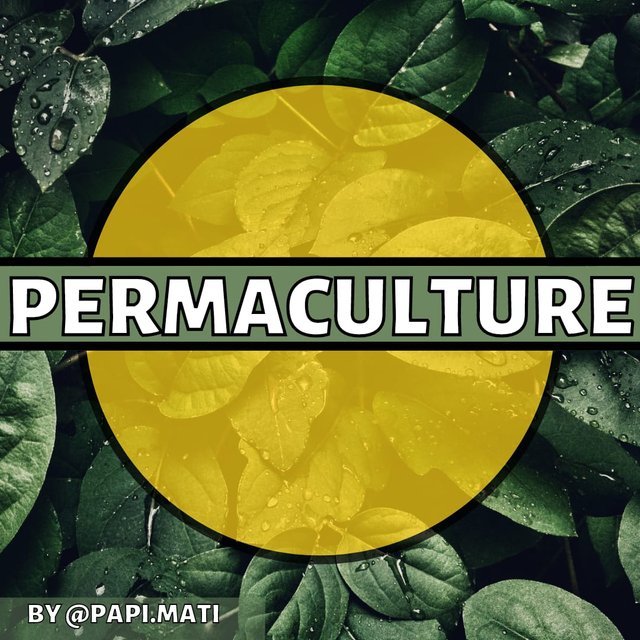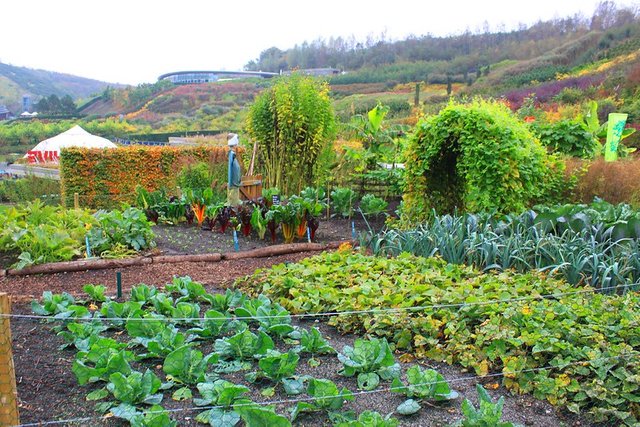Permaculture - Perfect size of your garden (Lesson 19)
HOW MUCH SPACE DO I NEED?
 Cover prepared in Canva
Cover prepared in Canva There is no one universal answer to this question. Before deciding to buy a plot of land, analyze all the most important factors.
Think about the climate in your region and how fertile the soil is. Permaculture can be established anywhere, even in the middle of the desert (hydroponic crops, crops in crates), but the fertility of the land will significantly depend on the variety of plants that can be grown. The costs associated with setting up a farm will grow in some climates too. On the other hand, the climate can significantly reduce or increase the amount of required space. In places where the growing season lasts all year round, more forecrops and catch crops can be used, while in cold climates, which exclude the cultivation of vegetables for several months a year, to produce the same amount of food, we will need more space.
Think about what goal you want to achieve. Are you just going to enrich your diet with a small number of vegetables from your home garden? Maybe you want to produce your eggs, milk, cheese, or even have animals for slaughter and meat production? Are you striving for self-sufficiency? If so - how big is your family? Some will be content with a few plant beds around the house, while others will aspire to produce most of the food or even sell part of the crops.
Do you want to have a recreational and decorative part in your garden? How big should it be? What are you going to put in it?
After all, the most practical factor. We all would like it not to be taken into account, but unfortunately, the reality is different - what budget do you have for the purchase of the plot and its further maintenance?
HOW TO REDUCE THE CROP SPACE?
- For small spaces, remember about vertical gardening - you will save space by climbing plants up on fences or house walls (peas, grapes)
- use all window sills. This is a good place to sow new vegetables before the seedlings reach the garden
- sow vegetables with shallow roots on balconies and roofs of buildings (remember, however, not to exceed the maximum load on the roof of the building)
- plant vegetables at home, in pots
- use dark places in the house and garden for mushroom production or edible algae farms. Optionally, you can also use artificial lighting, but it significantly increases the cost of food production.
- use the space under the trees to grow plants that like partially darkened positions
- use forecrops and catch crops
- plant several types of plants at the same time: quick-emerging with late-emerging ones, those with deep rooting with those that draw minerals from the top layers of the soil
- for medium and large gardens, do not start growing all over the place. Set up a garden in a small area, allow yourself to learn how to use the space effectively, and gradually expand the garden to the desired size.
- if you decide to set up a flower bed with decorative flowers, make sure that they also have practical use. Use edible, honey-bearing, or pleasantly scented flowers.
- in large gardens, change the unused into the pasture for grazing animals. After 3 or 4 years, it will be additionally fertilized by the animal excrements, which will increase the soil quality. You can also sow plants that extract nitrogen from the air and those with deep roots. The first, used as green manure, will improve the soil quality, while the second will loosen it naturally.
EXAMPLES OF GARDEN SIZE PLANNING
Below I present an example of the size of a garden with fertile soil and a seven-month growing season. Remember that these are only indicative estimates. In the '30s period, in Poland destroyed by the Third Reich, the Poles were suggested to have a garden of 300 m2. It was to ensure 50% of self-sufficiency. On the other hand, the average pre-war country manor house, producing enough food for the whole family (including milk, eggs, and meat) and providing recreational space, was around 6,000 m2. These are significant differences. I believe that 800 - 1000 m2 per person is relatively self-sufficient in the presented climatic conditions. Remember, however, that producing 10% of the food in your backyard is better than not growing any vegetables. So use what you have and don't worry if the space you have is small.
800 m2 for relative self-sufficiency (about 70-80%) takes into account:
- 25m2 for salads and small vegetables
- 65 m2 for fruit from small low-growing trees
- 45m2 for vegetables for storage
- 45m2 for berries
- 120 m2 for grain
- 80 m2 for feed grains
- 350m2 for a pasture for goats or sheep for milk (can be replaced with pods and potatoes)
- 70m2 for composter, paths, usable area
With 1000 m2, you can also build a chicken coop or you can plant potatoes. All these calculations are very rough - in countries where the growing season lasts almost all year round, thanks to the forecrop and catch crops can be produced much more than in countries where winters are severe and long. In addition, the garden of a vegan or a person who wants to buy milk and eggs in a store will look different than for a person who decides to be self-sufficient in 95% and will take into account beehives for honey production, a herb garden, or a pond with fish.
40-50% farm self-sufficient (vegetarian diet) - 80m2
- 2m2 for herbs
- 8m2 for paths and compost
- 45m2 for vegetables
- 25m2 for berries
It requires the purchase of not only eggs and milk, but also grains and possible meat. To achieve this level of self-sufficiency with just as little space, skillful use of forecrops and catch crops is required
20% farm self-sufficient - 50m2
- 6m2 for paths and compost
- 26m2 for berries (including strawberries left for 2 years, 6m2, later changed into vegetables for another 3 years)
- 18m2 of vegetables
In a garden with vegetables to diversify the diet, a bed of 25 m2 per person works best.
All my lessons are shared totally for free with a CC-0 license (which means you can copy my text and share it wherever you want to, without the need to mark me as an author). I hope it will bring you joy.
Previous lessons can be read here:
Fertilizers
2 - types of manure and when to use it
3 - Compost. Basics
4 - advanced composting
Soil and minerals
10 - Boron, Molybdenum, Copper, Magnesium
11 - Zinc, Calcium, Iron and other elements
12 - soil components: sand and clay
14 - soil components: calcium, microorganisms, minerals
15 - soil components, part four: water and air
Space
16 - Zone analysis
17 - Sectors in Permaculture
18 - Zones and sectors, practical use & examples
Thank you for reading,
@papi.mati

Como siempre excelente tutorial! Gracias!